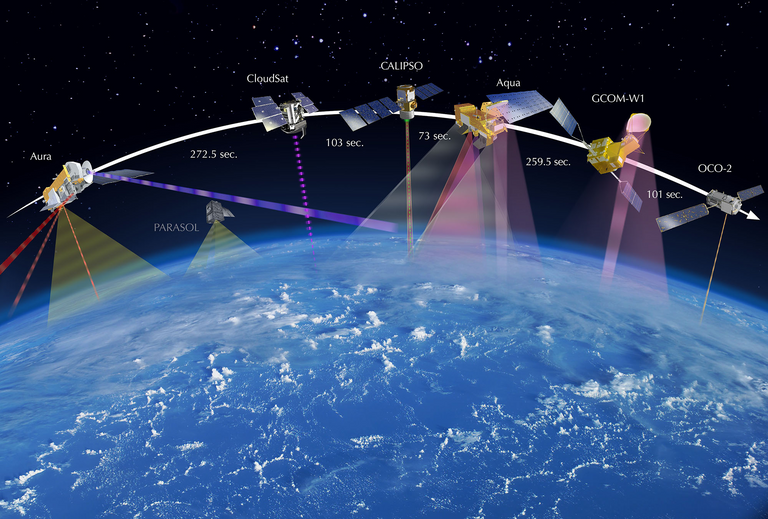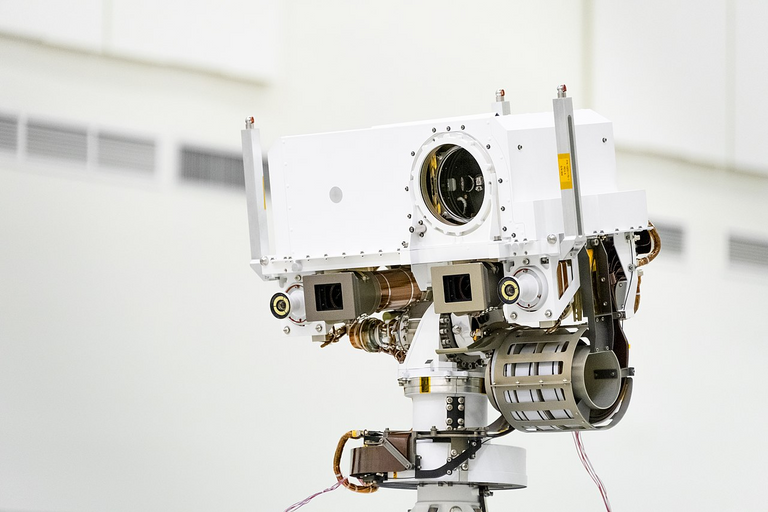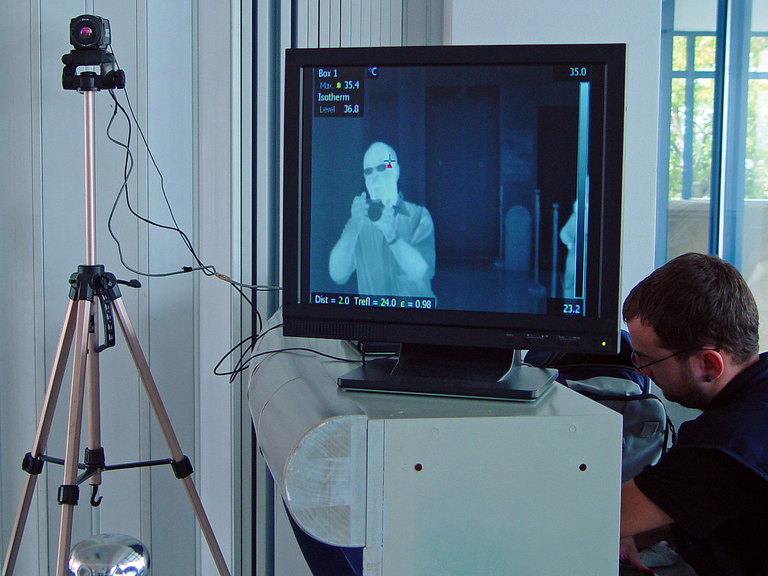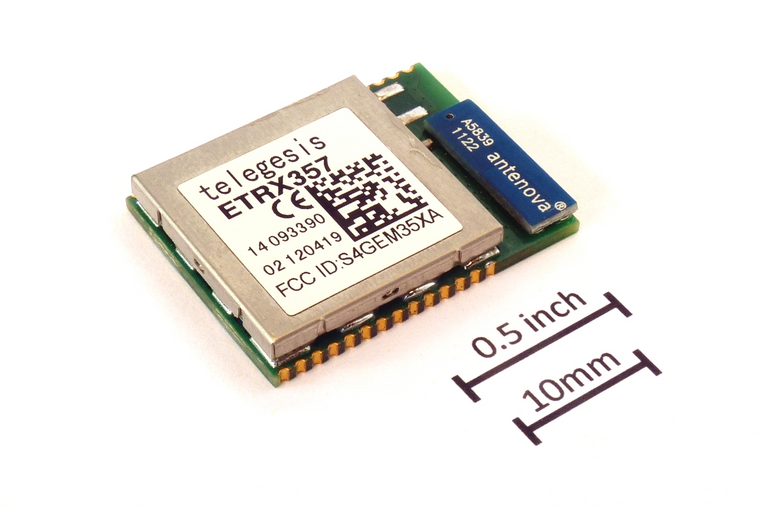Understanding the Wireless Sensor Network

Satellite detecting and measuring geospatial data. image source
Remotely observing real-time scenarios requires a network of sensors that quickly detects parameter changes in a process or an event. A wireless sensor network enables us to monitor the process and collect data such as biological and geospatial. A sensor network is an infrastructure that houses sensors, computers, and communication elements. Sensors enable the physical world to be digitized, which we can store, process, and analyze. We can utilize digital data to reveals underlying phenomena. When we integrate remote sensing into our devices, it gives tremendous societal benefits. It helps us to prepare for disasters, infrastructure failures, and the preservation of natural resources.
Sensing is a method to acquire information for physical objects or processes. It includes observing the occurrence of an event like changes in wind speed and gust of a typhoon. Sensors are objects performing the sensing task. An example of remote sensors is in our bodies. Our eyes, ears, and nose receive visual, acoustic, and olfactory information from our environment. Remote sensors perceive processes without physically touching any part of the process. We use remote sensors in a plethora of applications.
A wireless sensor network has four key components. The sensor network has an assembly of distributed or localized sensors. An interconnecting wired or wireless network that links the sensors. The network has a central point of information clustering and computing resources to handle data correlation, data mining, event trending, and status querying. The environment often influences the computing and communication infrastructure of the sensor network.
Sensing and Sensors

Mastcam-Z imagers for Mar's 2020 Remote sensing mast. image source
Sensing, as stated earlier, is a method to perceive information from the physical world that includes events. Sensors translate parameters and events in an environment into measurable signals. We can analyze these signals to understand a process or phenomena using computer algorithms. These signals are often raw and need to pass signal conditioning before processing. Some of these signals require attenuation, amplification, or filtering. When a signal amplitude is low, we amplify the signal so that the range matches the analog-to-digital converter. We filter the noise within a specific bandwidth or frequency. After signal conditioning, we digitized it using an analog-to-digital converter and ready it for processing, storing, and visualization.
Many wireless sensor networks employ actuators to control the process or event in real-time. For example, an actuator controls a valve to regulate the temperature in a boiler. The sensor network takes command and processes it in a controller. Also, it transmits an input signal to the actuator. It allows interaction with the physical processes and forms closed-loop control.
Sensors come in various forms in the market. Each sensor has a unique set of properties such as temperature, pressure, and light that influences its adaptation to a sensor network. Active sensors use external power to operate. These sensors emit energy like microwave, light, or sound to trigger a response. In contrast, a passive sensor detects energy in the environment to activate.
Wireless Sensor Network

Thermal Imaging of Tourist at he Airport. image source
Remote sensing allows us to monitor processes remotely in real-time. A wireless sensor senses changes in processes and do computing, communicating, and storing information. Sensor nodes can collect, analyze and merge data. When multiple sensor nodes cooperate in monitoring a large-scale system, we build a wireless sensor network. Each sensor node communicates to one another and the sink or base station. It broadcast data using wireless radios to allow remote processing, visualization, and analysis. With a wireless sensor network, we can process data simultaneously at different geographic locations.
The sensor nodes in WSN have different capacities. A simple sensor node observes a single environment, while the complex sensor performs extensive data processing and aggregation. These nodes are capable of simultaneously using different sensing methodology. Also, it forms a backbone for resource-scarce sensor devices to link with sink or base station. Individual sensor nodes are resource-limited that needs to be cheap to cover a large area to monitor. For example, only a single node has GPS, and usually, the sink has it. The sensor network actively senses some phenomenon that transfers the information to a target user.
A wireless sensor network is different from other wireless networks such as Wi-Fi hotspots. WSNs are spontaneous and deployed quickly without a deep understanding of the environment. We assumed that each sensor node tries to detect its sibling nodes rather than enable a specific service. It does not mean we spread the sensor node anywhere. Theoretical foundations and experiences with real WSNs allow us to strategically placed each sensor.
WSNs implement five-layered OSI architecture. These layers work together with power, mobility, and task management layers to efficiently run WSNs. The application layer manages the traffic for receiving and sending queries in the system. The transport layer provides internet communication using multiple protocols to ensure reliability and avoid congestion. A wireless sensor network utilizes multi-hop data transmission.
The network layer manages the routing protocols that maintain power consumption, memory, reliability, and redundancy. The network uses data aggregation or fusion to combine data from different nodes, provide data redundancy, and remove noise from aggregated data. A data link layer authorizes point-to-point and point-to-multipoint reliability for data. It supports MAC addresses, which is the node addresses. The physical layer provides the interface to transmit data stream over physical channels. It deals with the frequency of data transmission, including frequency modulation, signal detection, and security.

.4GHz ZigBee module with ceramic chip antenna. image source
Communication in a WSN
Early wireless sensor networks use the IEEE 802.11 standard for wireless networking technology. It adapts two frequency bands for WSNs: A 2.4-GHz band for IEEE 802.11b and IEEE 802.11g, and a 5-GHz band for IEEE 802.11a. It is still present in the current networks when bandwidth traffic is high. A sensor network requires similar data bandwidth as to its dial modem. The data rate provided by IEEE 802.11 is typically higher than needed for the sensor network. IEEE 802.11 also has high energy demand that is not suitable for low-power sensor networks.
Infrared systems require line of sight that restrict adaptation to WSNs. Bluetooth (IEEE 802.15.1) opens the possibility for integration in sensor networks, but too complicated and expensive. The IEEE 802.15.4 protocol is a short-range communication protocol for a low-power sensor network. The IEEE 802.15.4 protocol with ZigBee (a software layer above IEEE 802.15.4) transmits data at a rate up to 250 kbps from 30 to 200 ft and operates at a 2.4-GHz ISM radio band. Also, ZigBee/IEEE 802.15.4 complements other wireless technologies like Wi-Fi, Bluetooth, and ultrawideband. Academic and commercial institution favors the IEEE 802.15.4.
When sensor nodes are large enough, they can transmit data to the sink and form a star topology. This network topology represents a sink using a single hop. Hence remote sensing covers a large geographic location; the network uses multi-hop communication to regulate the transmission power and minimize energy usage. It represents a mesh topology where sensor nodes process their data and serve as a relay for other nodes. A sensor node, which serves as a relay to multiple routes, aggregates the data and eliminates redundancy.
Applications of Wireless Sensor Network
Wireless sensor networks encourage many applications across different fields. Some of them are innovative, while most of them are practically useful, like environment monitoring, precision agriculture, supply chain, seismic and volcanic monitoring, human activity, and underground mining, to name a few.
In the military, WSNs can detect and track threats to target weapons and area denial. Military also use sensor networks to map hostile locations and targets. Wireless sensors aid the deployment of wireline in a contaminated and dangerous area. WSNs make versatile intelligence and surveillance in the military. A sensor network for biological and chemical detection is vital for national security.
We can monitor seismic responses in large structures using a wireless sensor network. The sensors capture frequency of vibrations by using an acceleration sensor, tilt sensors, and piezoelectric sensors. We can use a sensor network to assess damages during seismic activities. WSNs can mitigate natural disasters when we disperse sensors to report events such as forest fires, landslides, floods, or storms. It allows a quicker and efficient response by emergency services.
Commercial applications of WSNs are supply chain management, pollution control, pipeline (oil, gas, water), and building automation. We could disperse the sensor over an industrial location to detect and control gas or chemical leaks. Homes, buildings, and locales equip with microsensors and technology became smart spaces.
References
- A. Dumka, S. K. Chaurasiya, A. Biswas, and H. L. Mandoria, A Complete Guide to Wireless Sensor Networks. 2019.
- K. Sohraby, D. Minoli, and T. Znati, Wireless Sensor Network: Technology Protocol and Application. 2007.
- Waltenegus Dargie and Christian Poellabauer, Fundamentals of Wireless Sensor Networks: Theory and Practice. John Wiley & Sons Ltd., 2010.
- H. Karl and A. Willig, Protocols and Architectures for Wireless Sensor Networks. 2006.
- I. Akyildiz and M.C. Vuran, Wireless Sensor Network. John Wiley & Sons Ltd. 2010.
- L. Frenzel, What is the difference between What’s The Difference Between IEEE 802.15.4 And ZigBee Wireless?
- M.C. Mancilla, E.L. Mellado, and M. Siller Wireless Sensor Networks Formation: Approaches and Techniques, Hindawi
https://twitter.com/juecoree/status/1360617757755121665
!discovery 35
This post was shared and voted inside the discord by the curators team of discovery-it
Join our community! hive-193212
Discovery-it is also a Witness, vote for us here
Delegate to us for passive income. Check our 80% fee-back Program
Yay! 🤗
Your post has been boosted with Ecency Points.
Continue earning Points just by using https://ecency.com, every action is rewarded (being online, posting, commenting, reblog, vote and more).
Support Ecency, check our proposal:
Ecency: https://ecency.com/proposals/141
Hivesigner: Vote for Proposal
Thanks for your contribution to the STEMsocial community. Feel free to join us on discord to get to know the rest of us!
Please consider supporting our funding proposal, approving our witness (@stem.witness) or delegating to the @stemsocial account (for some ROI).
Please consider using the STEMsocial app app and including @stemsocial as a beneficiary to get a stronger support.
Points Boosting refund to @juecoree! 🤓
Due to one of these reasons:
1. Post is not published via Ecency.
2. Post is already curated by our team.
3. Post is not curated by our curators within 24 hours.
4. Post might be too old post, try more recent content.
5. Author already received vote in last few hours, try again later.
Install Android: https://android.ecency.com, iOS: https://ios.ecency.com mobile app or desktop app for Windows, Mac, Linux: https://desktop.ecency.com
Learn more: https://ecency.com
Join our discord: https://discord.me/ecency